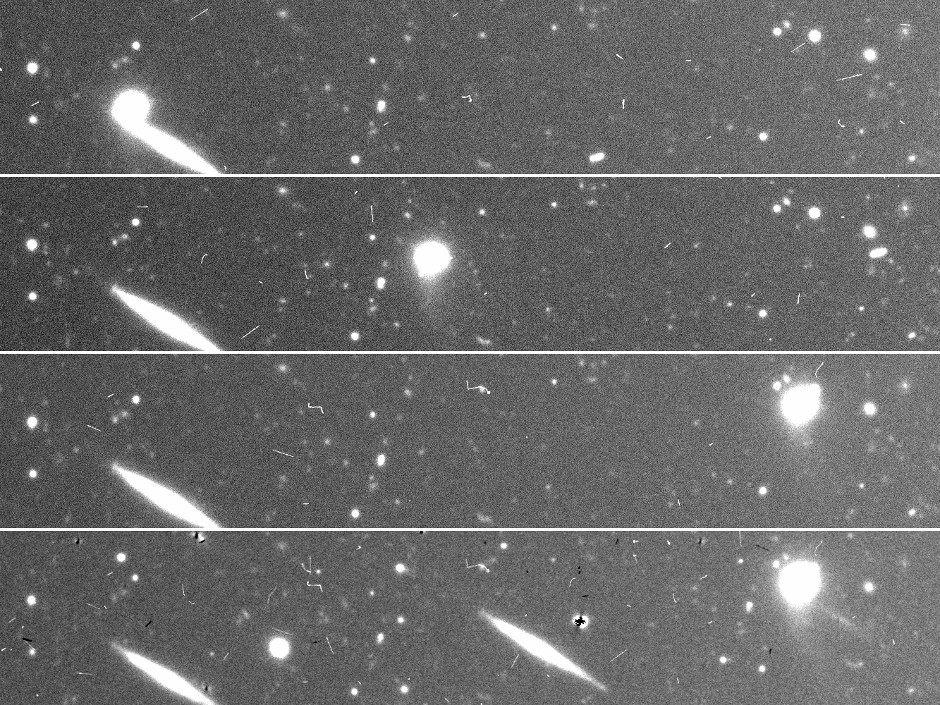
Observations taken with the 8-metre Subaru Telescope on Maunakea on 17 March 2015 UT showed that the asteroid had “an extended feature,” which is astronomer-speak for a tail.
However, unlike the tails of comets, which flow in the direction opposite from the Sun due to the solar wind, the extension on Griseldis was not in the antisolar direction, and the extension proved to be a short-lived phenomenon.
Additional observations taken with the 6.5-metre Magellan Telescope four nights later still detected the extension, though it was weaker, but exposures taken with the 2.2-metre University of Hawaii telescope on 24 March UT or Magellan on 18 April UT and 21 May UT showed no such feature, nor did images from telescope archives taken in 2010 and 2012.
The researchers, David Tholen (Institute for Astronomy, University of Hawaii at Manoa), Scott Sheppard (Carnegie Institution), and Chad Trujillo (Gemini Observatory) have therefore concluded that “the observations are consistent with the occurrence of an impact event on this asteroid.”



